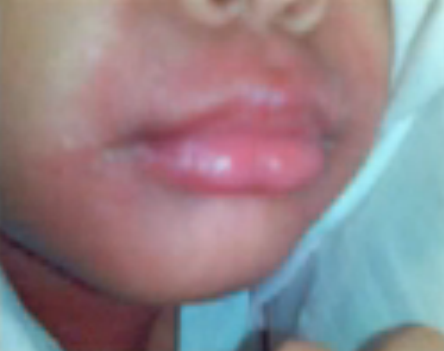Scalded skin syndrome is an ailment that is characterized by blistering, reddish skin which is similar in appearance to scalded or burnt skin. Hence, the illness has the name scalded skin syndrome.
The staph bacteria usually live in the nose and on the skin without causing any issues. However, when the skin is damaged via an injury, surgery, etc., it becomes possible for the bacteria to overcome the natural defenses of the body and cause illnesses such as scalded skin syndrome.
Contact with 2 exotoxins, i.e., epidermolytic toxins A and B, present in the toxigenic strains of the staph bacteria (or Staphylococcus aureus) results in the development of scalded skin syndrome.
The component of the skin cells that perform the function of sticking to the nearby skin cell is known as desmosomes. Toxins from the bacteria attach themselves to a molecule present in desmosomes and cause it to break up. This causes the skin cells to unbind, leading to scalded skin syndrome
The disorder is often referred to as Lyell’s disease or Ritter’s disease, when it affects infants or newborns
Symptoms of Scalded Skin Syndrome
Scalded skin syndrome generally begins with a fever, quickly followed by irritability and overall skin redness. In about 24 to 48 hours, there is formation of fluid-filled blisters which break easily and leave regions that appear like burns.
Some of the features of the rash are as follows:
- The skin has a wrinkled appearance like a tissue paper. Big blisters filled with fluids then form in the groin, armpits as various orifices in the body such as the ears and the nose.
- The rash then spreads to other areas of the body such as the legs, arms and the torso. Newborns affected by scalded skin syndrome may experience the rash near the umbilical area as well as the diaper region
- The topmost layer of the skin then begins to peel off in layers. This exposes red, moist and tender parts of the skin
- Painful and tender areas around the sites of infection, dehydration and weakness are some of the other signs of scalded skin syndrome
Early diagnosis and prompt treatment of scalded skin syndrome does not lead to any medical complications. However, if the condition is left untreated or if the illness refuses to respond to treatment, then it can result in the development of many health complications such as cellulitis, sepsis and pneumonia. Extreme infection due to scalded skin syndrome can also result in death of the affected individual.
Causes of Scalded Skin Syndrome
Scalded skin syndrome is caused due to infection by staph bacteria that is capable of producing the 2 causal exotoxins, i.e., epidermolytic toxins A and B. Most outbreaks of the syndrome often start in childcare centers. An adult carrier of the staph bacteria, who does not elicit any symptoms of being a carrier, generally tends to introduce the bacteria into the care facilities.
It is important to note that fifteen to forty percent of the human beings are asymptomatic carriers of the staph bacteria and do not experience any disease or infection. However, infections of the staph virus can be easily detected in younger children and infants and hence they are increasing vulnerable to developing scalded skin syndrome. It is also common to find the staph bacteria in infections of the ears, throat and the eyes.
Scalded skin syndrome generally tends to affect infants who are not older than five years, especially newborns. The immune system is usually able to gather the antibodies against the staph bacteria during the childhood years. These antibodies can then protect the individuals against staph bacteria, for their lifetime. Hence the incidence of scalded skin syndrome is very rare in adults and older children
Newborn babies do not possess the immunity levels against various toxins. Also their renal clearance system is quite immature. This places them at the greatest risk to developing scalded skin syndrome.
Regardless of one’s age, individuals who have a compromised immune system, and those with renal failure are also at increased vulnerability to developing scalded skin syndrome
Treatment of Scalded Skin Syndrome
Intravenous administration of antibiotics is usually essential to elimination infection by the staph bacteria. Hence, the individual affected by scalded skin syndrome needs to be hospitalized.
An anti-staphylococcal, penicillinase-resistant like flucloxacillin, is generally used in injections. After a few days of treatment at the hospital, the doctor may replace intravenous antibiotics with oral antibiotics. However, this is dependent on the response of the patient to the treatment. After discharge from the hospital, the treatment of the individual affected by scalded skin syndrome needs to be continued at home.
Some of the other treatments for scalded skin syndrome that support the above mentioned primary treatment include the following:
- Electrolyte and fluid intake must be maintained
- Painkillers may be prescribed for alleviation from pain and fever
- Since the skin is often very delicate, additional skin care is essential
Even though the visible symptoms of scalded skin syndrome do not look good, most affected children recover from the illness. The healing is generally complete within a week from treatment commencement.
Scalded Skin Syndrome Pictures





